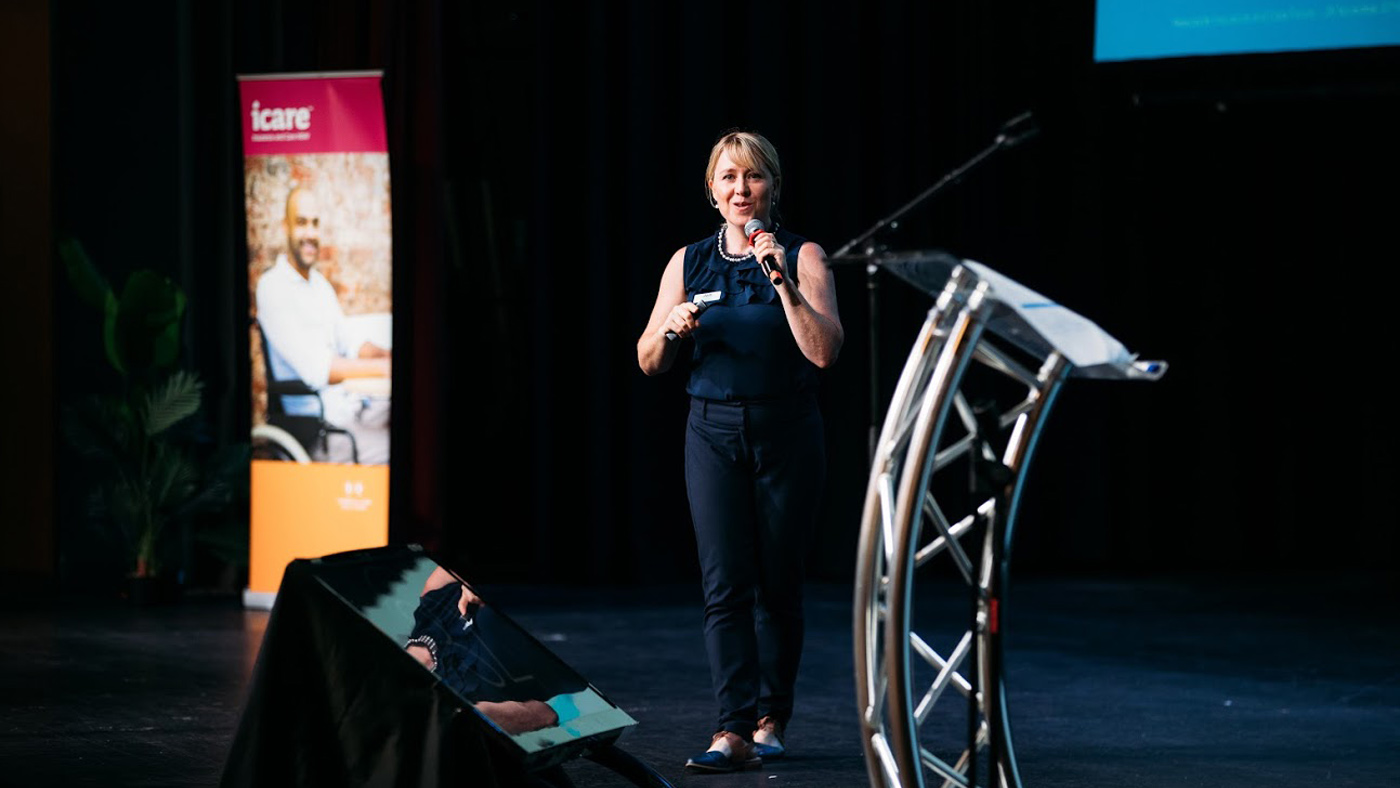Today’s workplace insights for a better workplace tomorrow
Can we influence safety culture to improve safety across NSW workplaces?

Jen Cameron, icare Injury Prevention Manager
We have come a long way since 1956 when a falling bucket of boiling bitumen scalded a construction worker and sparked the landmark court case which found employers' obligation "to take reasonable care to avoid exposing the employee to unnecessary risk of injury", and birthed modern Australia's Workplace Health and Safety (WHS) regulations.
Six decades later and we're still grappling with both physical and psychological issues of safety. We know we need to create safe environments for our workers, but what happens when there is a disconnect between policy and follow-through?
It’s into that void that icare's Injury Prevention team have delved, seeking to understand the minutiae of what creates and influences safety culture.
Protect Together
"Injury prevention lives in people: it exists in the way teams talk, the way individuals walk around in the workplace and in-between meeting minutes. In a way, it's a living part of an organisation," said Jen Cameron, Injury Prevention Manager at icare.
Injury prevention is something Jen Cameron and her team have dedicated their careers to, keeping their hands on the pulse of the ever-evolving risks posed in our shifting modern workplaces.
"There are three main parts to injury prevention, first is identifying the risks and keeping an eye out for new and emerging risks; the second is developing policies and a plan to minimise these risks; and the third is ensuring these strategies pollinate in workplace culture," she said.
Protect Together is the brainchild of the Injury Prevention team, aimed at helping NSW businesses to uplift injury prevention in a tangible and longstanding manner.
The program focusses on businesses that may be experiencing higher injury and claim rates.
"Businesses will approach the team and we'll work with them to identify all the factors that may be impacting workforce health and safety," said Cameron.
Cultural surveys deployed across workforces as part of the process, identify the gaps where policies and culture divide.
Nearly 7,000 NSW workers across 10 different industries have taken part in Culture Surveys. Insights from this data are now being mined by the Injury Prevention team to understand issues and trends common to most NSW businesses.
Leadership is key to safety
Over 32 per cent of respondents said that recognising and rewarding appropriate behaviour in the workplace was the most important thing leaders can do to influence safety culture.
"Leaders are vital to creating a positive workplace culture, especially in their attitudes towards physical and psychological safety," Cameron said.
Twenty-five per cent of respondents also stated that establishing trust between employees and management was critical to making employees feel comfortable to raise safety concerns.
According to Cameron, when looking to strengthen leadership for safety culture, leaders should:
- Role model the behaviours they would like to see in others. For example, following safety protocols and calling out when they see that other people are not.
- Be visible and accessible to workers. People need to see and understand you if they are going to trust you.
- Demonstrate commitment to both physical and psychological safety by putting it on the agenda. This may be via regular communication or setting specific targets.
Mental health needs more work
Employees are significantly less likely to be comfortable talking about psychological safety (72 per cent) than physical safety (87 per cent), according to survey analysis. This finding is consistent across industries.
"Despite the recent spotlight on mental health, there is still a lot of stigma around the subject," Cameron said.
"To really shift the dial, we need leaders to normalise mental health in the workplace: the ups, the downs and the challenges," she added.
Comfort in talking about psychological safety at work is also a key driver of the organisation's overall safety culture score, and as such, is a key area to get right. Cameron suggests leaders take the following actions to normalise mental health in the workplace:
- Championing a mental health initiative in the workplace.
- Sharing a personal story about mental health. For some leaders this may be a story about themselves, and for others it may be a story about what they have observed.
- Acknowledging the importance of health, both mental and physical, and committing to having initiatives and objectives to improve health within the organisation's strategy.
Communication drives safety
Clear and effective communication with employees is a key driver of overall safety culture, according to survey results, particularly for people working within the health and community sector.
"Communication is critical. You need to be able to articulate what is important and how the values of your organisation should guide decision-making and translate into behaviours," Cameron said.
As to how to have those conversations, Cameron suggests leaders:
- Ensure that communication is two-way. It is important that leaders can communicate key messages and that workers can communicate back to leaders on key issues.
- Communication should be simple and easy to understand.
- Have a variety of channels or pathways for communication to occur. For example, a formal mechanism may be via a committee, however, creating opportunities for informal communication (for example leaders walking the floor) is also very valuable.
What's your safety culture?
A safety culture doesn't just happen, it is built. As with all buildings, from time to time, inspections are required to make sure they're maintained to the highest standard. If you were to inspect your safety culture today, based on this exact moment, what would you find?
If you are interested in teaming up with an injury prevention specialist to see if your workplace needs a bit of a safety tune-up, register your interest via email at prevent@icare.nsw.gov.au.

